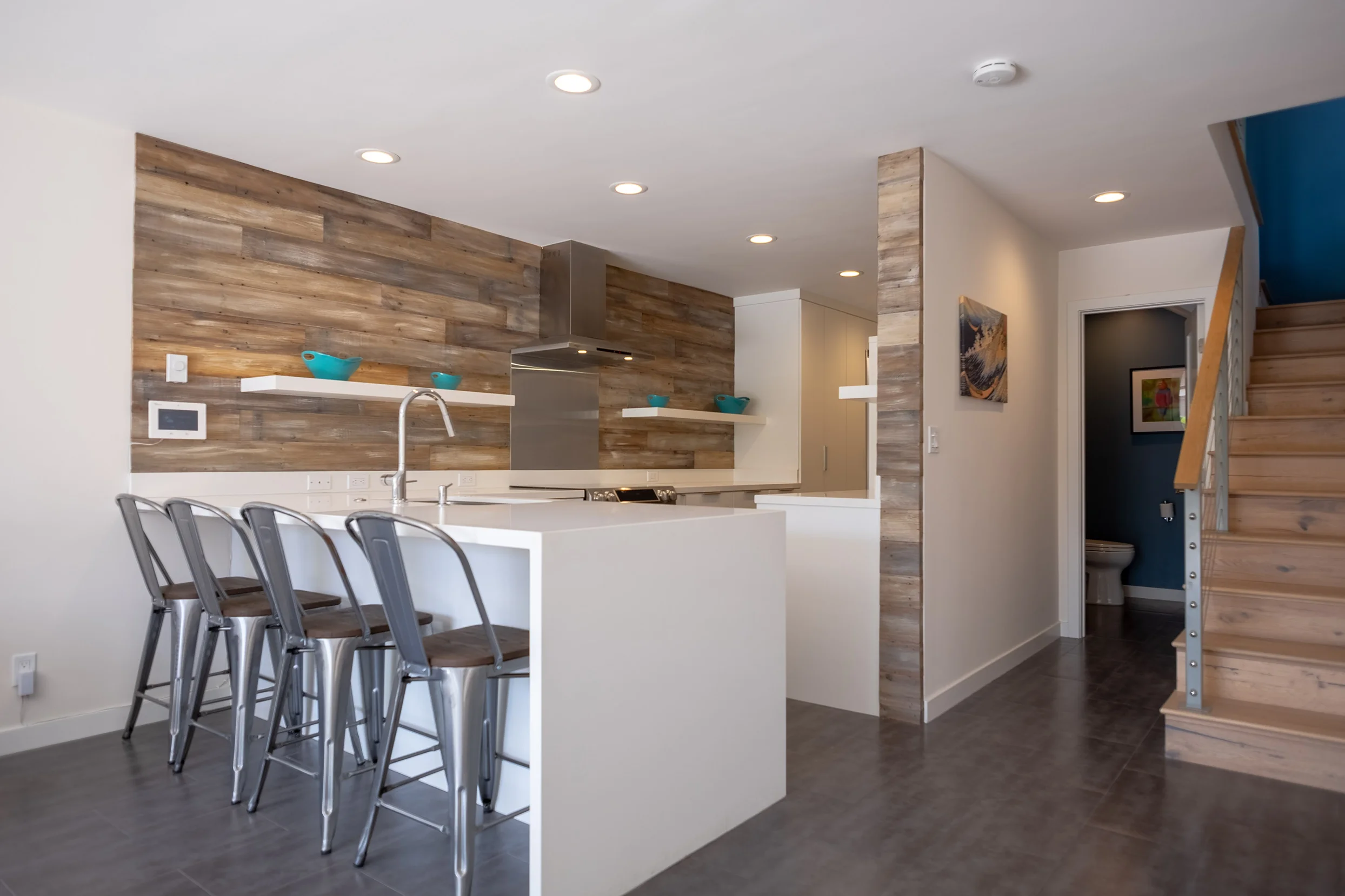
Invest time & resources into a product,
with an expectation of a return on investment,
at some point in time in the future.
Research
What does finding a fixer-upper and remodeling it have to do with the design of a digital product?
In both the owner, is an investing time and resources in a "product" with the expectation of a return on this investment at some point in time.
Both require a mix of informed decisions and frankly guesses about the market, product market fit and the final product throughout the process.
Minimize Risk
It's easy to see buying a home in Southern California as risk free. After the 2008 mortgage crisis, the value of property has kept increasing along most of the Southern California coast since 2011. Prop 13 capped property taxes to 1% of the purchase price and annual increases to 2%. After accounting for maintenance and taxes, rising value makes home ownership a great investment for over a decade.
Nonetheless, prior to purchasing you want to evaluate the opportunities and risks of a particular property.

Natural Hazards
Any property in California is at risk from infrequent but catastrophic events like:
- Earthquakes, near fault lines, or from soil liquefaction and mudslides.
- Flooding, from tsunamis in low lying coastal areas.
- Cliff Collapses, from wave erosion.
- Fire, in areas close to open brush or forests.
Fortunately, in California, information about hazards is public and aggregated at sites like propertyshark.net.
Mortgage lenders require you to insure against common hazards in the area. But insurance will only cover so much in a major emergency so an owner has to decide which hazards are more likely and plan accordingly. This has become difficult as recent events have resulted in more claims, increases in insurance rates, and less coverage options.
Neighborhood trends
Places cycle between being desirable when they are new, and at best, unfashionable after the first generation of owners. Most neighborhoods are built with nearly identical spec houses tailored to needs and budgets of a targeted demographic. Tastes change, and neighborhoods can change from predominantly owners to renters. They can also bounce back if a combination of location, upgrades, and good schools lure young families back.
Ideally you would spend a few days in a neighborhood before buying. More realistically, driving around at different times of the day and observing the type of vehicles, condition of houses and the types of local retail will indicate whether a neighborhood is trending up or down.
Housing Stock
There's a limited amount of housing stock in the first mile or two from the beach. The Southern California coast has been highly desirable since statehood and each wave of development has unique characteristics:
- Pre-1940s. 800-1200 sf homes on small lots in walkable areas. Offers flexibility for rentals.
- Postwar to Late 60's. 1800-2400 sf single family one story ranches in a suburban setting.
- 70s. Small multi-unit developments with some common ownership of land or buildings.
- 80s. Larger 50+ unit condo developments or gated communities.
Change Limiters
If you buy in area with the potential to improve, it's important to know what factors might limit change.
- Building Code Compliance - Bringing older buildings into compliance with modern building codes can be cost-prohibitive. There is an art to choosing which alterations can trigger code upgrades.
- Non Conforming Uses. Older buildings might not conform to current zoning geared to car oriented development. Changes could require a zoning variance triggering time consuming public hearings.
- NIMBYs. In areas that are undergoing rapid change there will be people that want to keep things the way they were.
- Rental Restrictions. Some cities are also known for conflicts between resident owners and seasonal or short-term tenants.
- Shared Ownership. Two or more parties are rarely in sync about changes and funding capital improvements. This impacts use, repairs and upgrades.
- Home Owners & Condo Associations. CCR's (Covenants, Conditions & Restrictions) tend to maintain the status quo.
Construction Costs
An experienced renovator can estimate the cost of improvements against how much income a property can generate through sale or rent. As relative newbie's we only have our own experience to go on and inspections to flag expensive issues like leaky roofs, structural issues, leaking pipes under the foundation, or slope movement.
Cosmetic improvements have a lot of price points, but these can be estimated by researching products online and talking to specialist contractors to get ballpark figures. Most are comfortable giving rough estimates if you provide the applicable dimensions and descriptions of the intended materials.
Our Choice
We purchased one unit of a 70s duplex style townhome in the north San Diego community of Leucadia. The lot was close walking proximity to many amenities and a relaxed beach vibe. The neighborhood was situated on sandstone cliffs that are a formidable defense against anything short of a mega-tsunami. It's free of fault-lines and liquefaction risk.
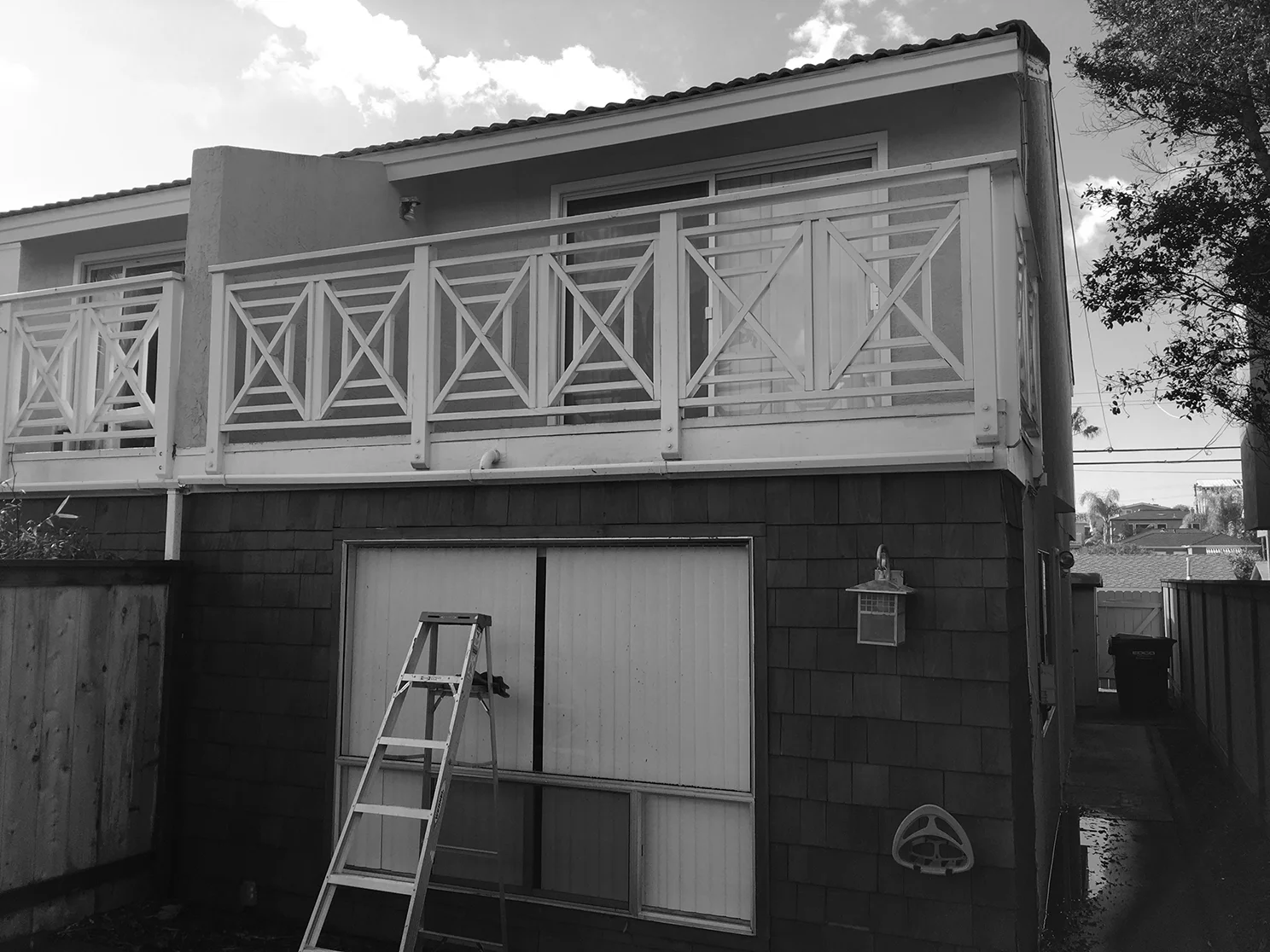
Leucadia is an eclectic mix of small beach cottages and several different generations of small scale single and multi-unit developments. There are commercial properties along Highway 1, two short blocks inland. The neighborhood is in transition with older buildings being turned over one by one. It has a hippy beach vibe that's more liberal than the conservative car-oriented developments further inland in Encinitas.
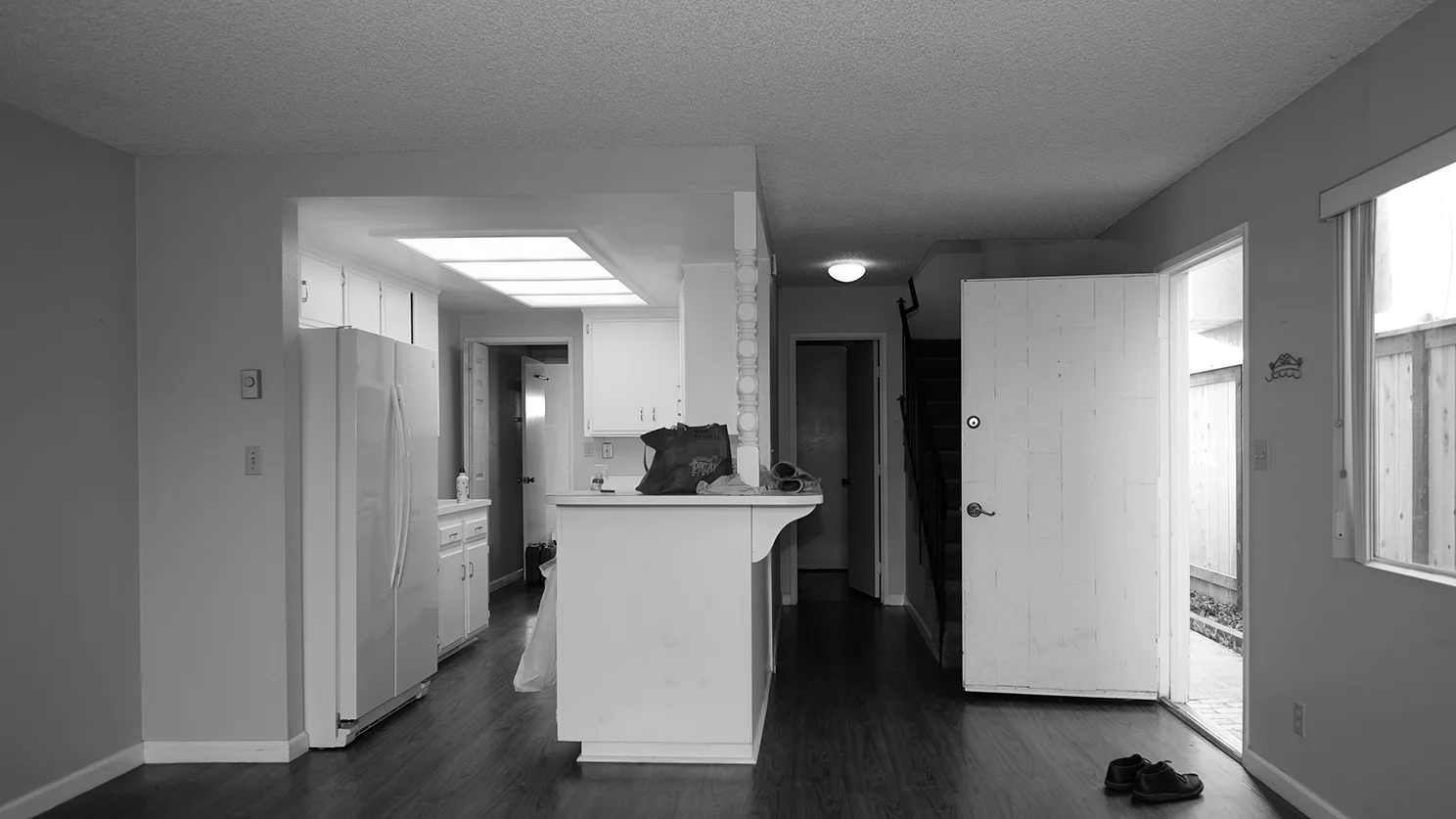
The townhome was 1100 square feet with 2 bedrooms, 1.5 baths and a small garage. It needed work, including a cracked sewer line under the ground floor slab foundation. Frankly, no home that we could afford within a mile of the beach was really move-in ready.
Understand the value that specialists bring to the project,
how to communicate with them,
and the artifacts needed to get the job done right.
Communication
Like bringing a product to market, the home buying and renovation process involves a few distinct phases and people.
Purchasing & Escrow
The period when offers are made, countered and one is accepted is stressful. It's followed by a 30 day escrow during which the buyer gets to inspect the property, get financing approved, or potentially back out of the deal. The stress on the buyer is somewhat mitigated by their team:
- Real Estate Agent - We worked with a buyer's agent with good knowledge of San Diego County. They are great for working through the paperwork needed for an offer, due diligence on the property, and acting as an emissaries in what can be a very emotionally charged negotiations.
- Inspectors - During escrow we can hire consultants to inspect for invisible issues that are expensive to repair.
- Appraisers & Loan Officers - A bank will lend you money for a 30 year mortgage based on their appraisal that your home's value is worth at least the price that you and the seller agree to. The sample size of comps of roughly similar size, amenities and construction quality is small and can greatly affect the quality of the appraisal. Banks vary greatly in their responsiveness and their ability to underwrite non-standard properties.
Finding & Working with a General Contractor
Once escrow closes the next phase is finding a GC or general contractor. In California any work that exceeds $500 needs to be done by a licensed and bonded contractor.
The GC is responsible for coordinating supplies, managing the different trades, ensuring the work is done correctly, and passing city inspections. A homeowner can be their own GC but in this context the liability and number of trades involved make it impractical. Most trades are either employees or subcontractors under the GC. Specialists consultants are contracted to provide submission drawings, calculations on load bearing features, energy efficiency of windows and lights.The relationship between me and the GC is tightly defined through a contract, change orders, specs, design and working drawings.
Getting a bid from a contractor is often frustrating. They are busy on multiple job sites managing several crews and talking to potential new clients. In a dynamic common to any custom project, a contractor is judging whether you are a good potential client or just price shopping for the lowest bid. From the client point of view it's difficult to lock down the project scope & budget without an experienced contractor breaking it down.
In our case we wanted to increase the number of bathrooms. We weren't familiar with the local city regulations and labor costs. Material costs were changing as new suppliers from China challenged the US and European brands we knew.
Designers & Role of Drawings
Until the General Contractor is hired almost no drawings have been exchanged with anyone. Any estimates done by the contractors are based on building dimensions, numbers of items, and written descriptions of planned changes.
A designer could provide rendering or plans of the proposed project but was no need to design construction details. We had to be mindful about the placement of walls, plumbing fixtures, electrical fixtures, windows and doors but otherwise it was quite standard construction.
We planned to use my sketches and measurements as the starting point for any required drawings.
Waterfall vs Agile MVP
In residential construction the workflow follows a waterfall model. Physical constraints prevent continuous iteration, and a minimal value product approach. You have to workout spatial flows, layout, on the drawing board or in a 3D modeling program, convert that into working drawings, and get those approved before you can start tearing into the walls and seeing what's really going on.
Also space in complex rooms like kitchens and bathrooms is tight so it's easier for trades to work in sequence than parallel.
While this goes against the current thinking in software development, trades who have learned to work together this way for decades know how their work fits into the grand scheme of things and how to communicate issues that might affect the next trade.
In the real world it's expensive and difficult to redo mistakes. There's no minimum value product. Paint and furniture are the chief ways to modify the appearance and utility of room economically.
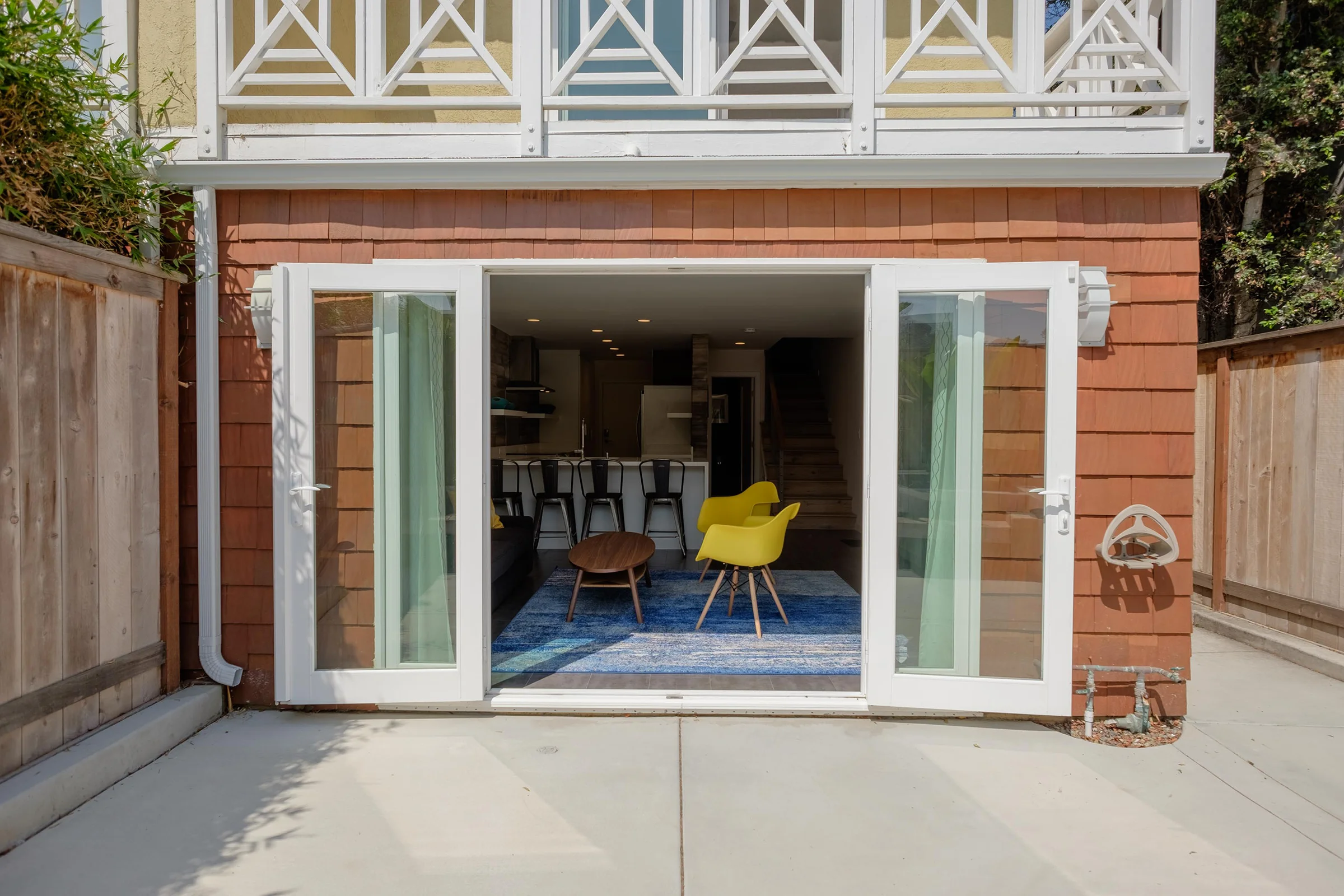
Loose Programming within Tight Constraints
Whether you design websites, apps, furniture or buildings your ideas have to work within the constraints of the end product.
The user experience of a residential space is an odd concept. Certain concepts like user flow have analogies to the flow between rooms but homes are not tightly programmed with a linear flow like an amusement park ride. Remodels further restrict what's possible.
You are setting up the most flexible and comfortable spaces possible within the physical constraints of the building envelope and code requirements. You balance these priorities when choosing finish materials, appliances, and fixtures that have to fit in a constrained space.
Existing Layout
The kitchen was a narrow galley layout with dated cabinetry. You had to twist and turn to access the laundry room and garage in the rear. The living room did not have a direct access to the front patio area.
We saw the potential to reorganize the two rooms into an indoor-outdoor space focused towards the outside.
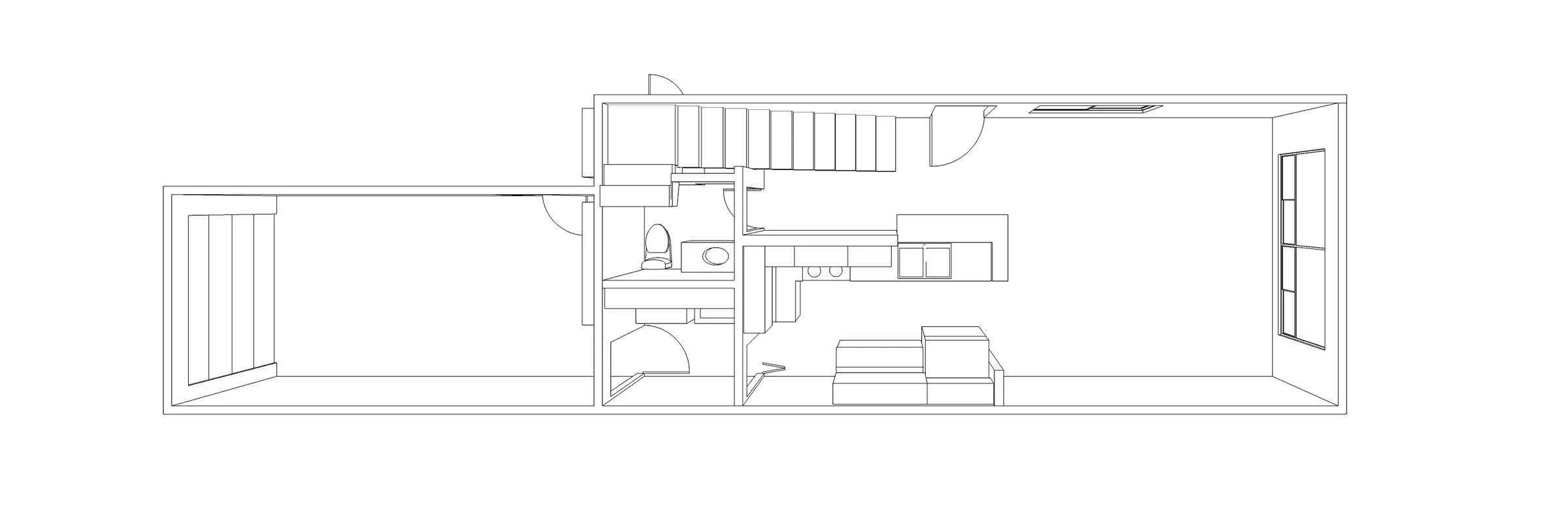
The first floor had two bedrooms sharing a bathroom layout with a toilet and shower room adjoining a room with two sinks.
We thought that there was a better way to use the space as two separate bathrooms.
The rear bedroom had a small non-standard door providing access to a rear deck over the garage.
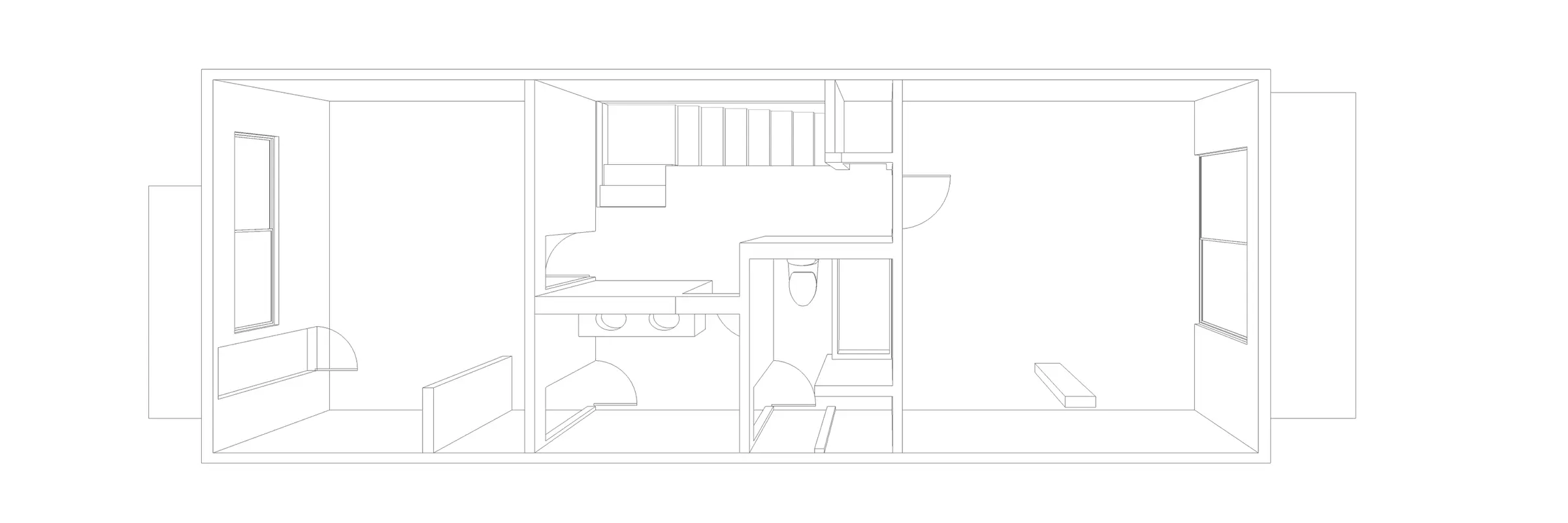
Working with Chuan Miller Design & Construction
We knew we had to budget for a gut remodel but still had not pinned down whether it was feasible to increase the number of bathroom and potentially convert the garage into an extra bedroom. We talked to several contractors while we were in that planing mindset.
Thankfully we found Chaun Miller, a contractor who was able to ballpark our ideas, show us that a garage conversion would require a time consuming variance and communicated the issues we could predict. It helped that he was a hybrid design builder with several projects in the same contemporary style we were aiming for.
Working remotely from LA, I provided drawings derived from a Sketchup model of the new layout. Chaun's draftsman converted them into correctly annotated working documents and we proceeded with permitting.
New Layout
We changed the ground floor layout carefully to minimize changes to the plumbing stack. In the kitchen the sink was repositioned to the front and the washer & dryers to the garage. The living room window opened up into a french door to access the patio. San Diego's mild climate makes outdoor living easy for a good part of the year.
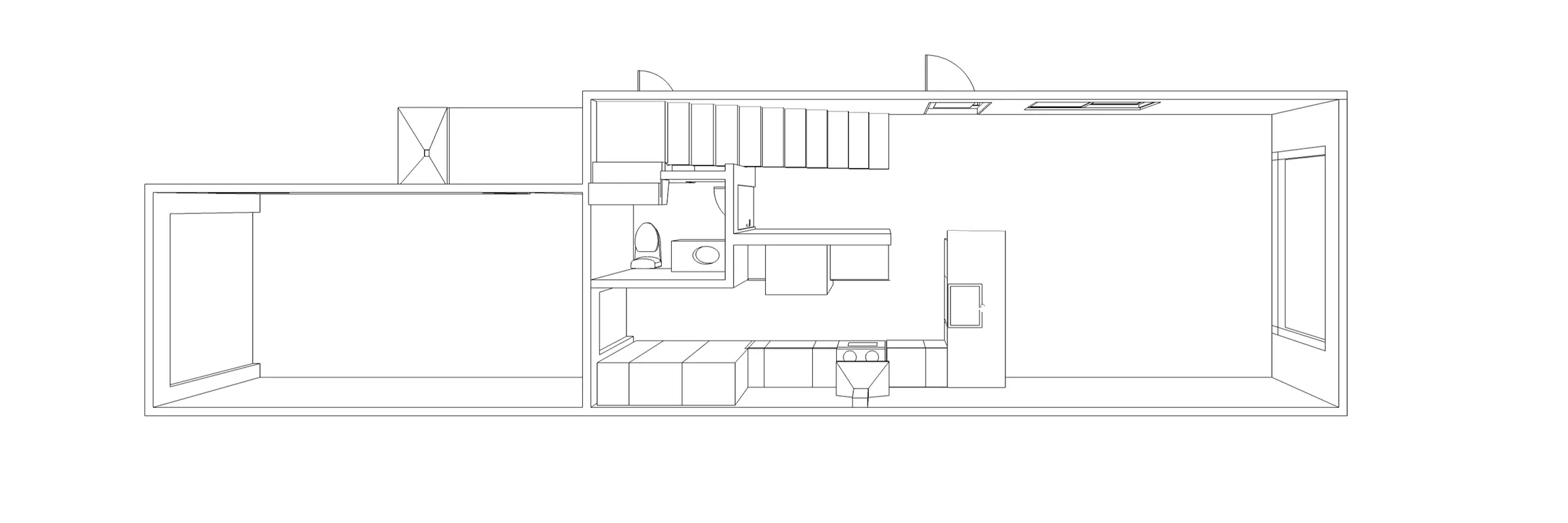
On the first floor, The bathrooms were reconfigured into 2 independent 5x8 bathrooms. The rear bedroom got a sliding door to match the front. Some plumbing need to be moved around but we could work within the constraints of the existing exhaust stacks.
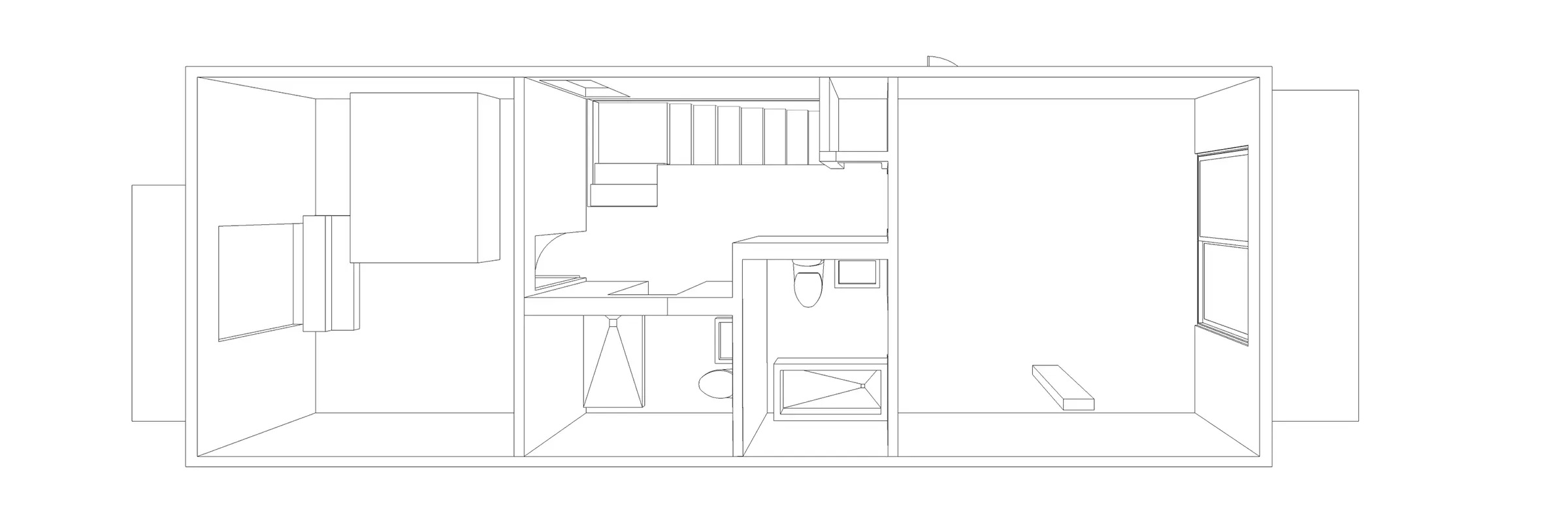
Sourcing in 2016
Our choice of fixtures and surface materials balanced our own tastes with finding durable elements that could stand some abuse from potential renters.
We were surprised by the number of suppliers from China since our last project in 2009. We also had to choose between online suppliers and physical showrooms.
Some of the showrooms raised concerns about quality and durability of the Chinese products compared to American and European brands. But after investigating deeper it turns out that some American and European branded products have supply chains that originated in China too. You had to dig down to the line or model level to really know where your fixtures come from.
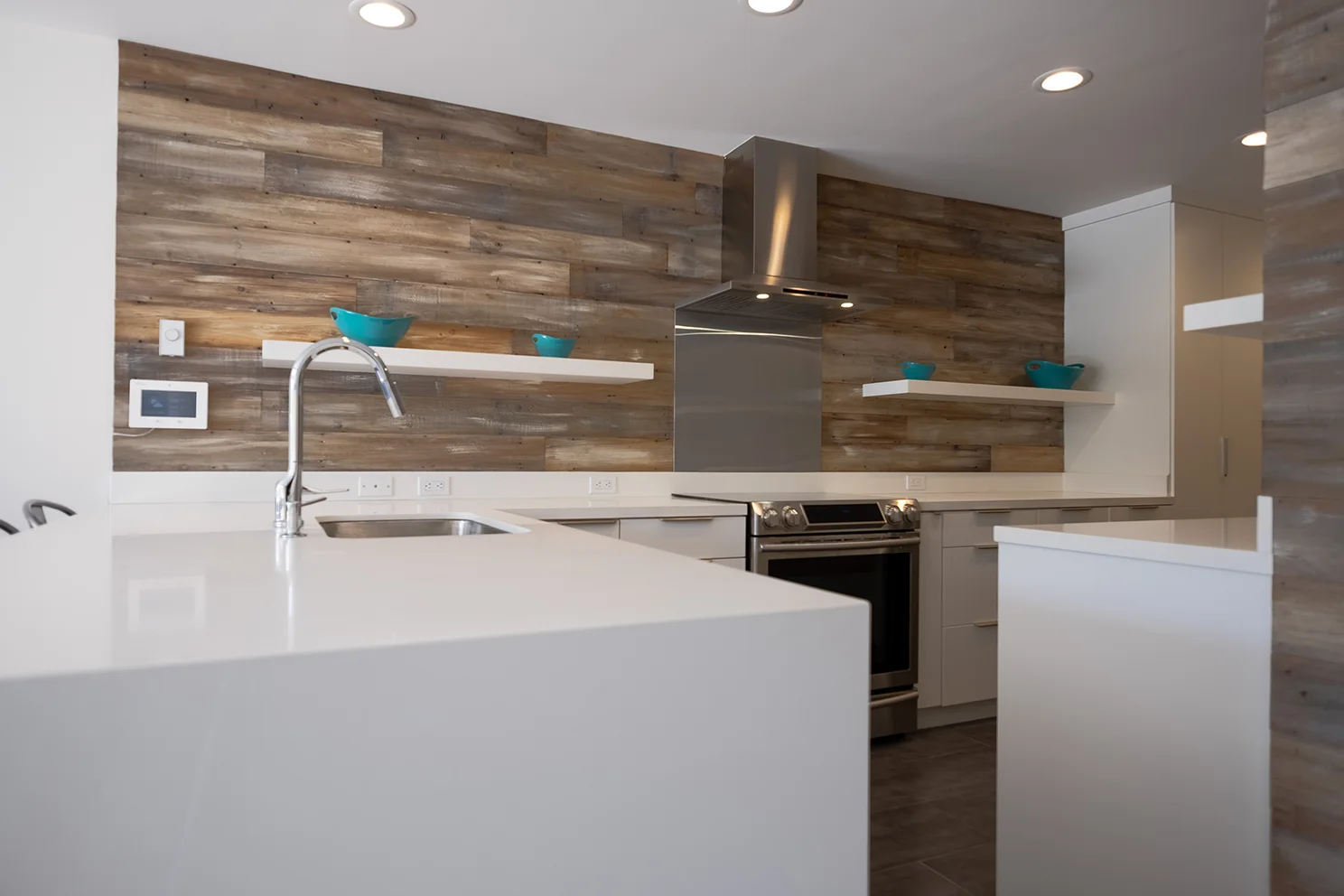
California has quite stringent environmental regulations governing building. On interior renovations this affects your choice of lighting fixtures, window size, and plumbing fixtures. There were brands attempting to sell fixtures without the proper US certifications.
For fixtures we stuck with Kohler’s Purist line. As luck would have it, 3 faucets were defective and we had to buy new cartridges to have them working for final inspection. Both Kohler and the plumbing supply store's response to the situation were suboptimal.
New kitchen featuring breakfast bar with quartz waterfall counter. We went with quartz countertops from an unbranded Chinese source. Flooring was porcelain tile on the ground floor and engineered wood on the stairs and 1st floor.
We made a small contribution to reducing construction waste by recycling some old redwood fencing as a full height backsplash in the kitchen to create a contemporary rustic feel.
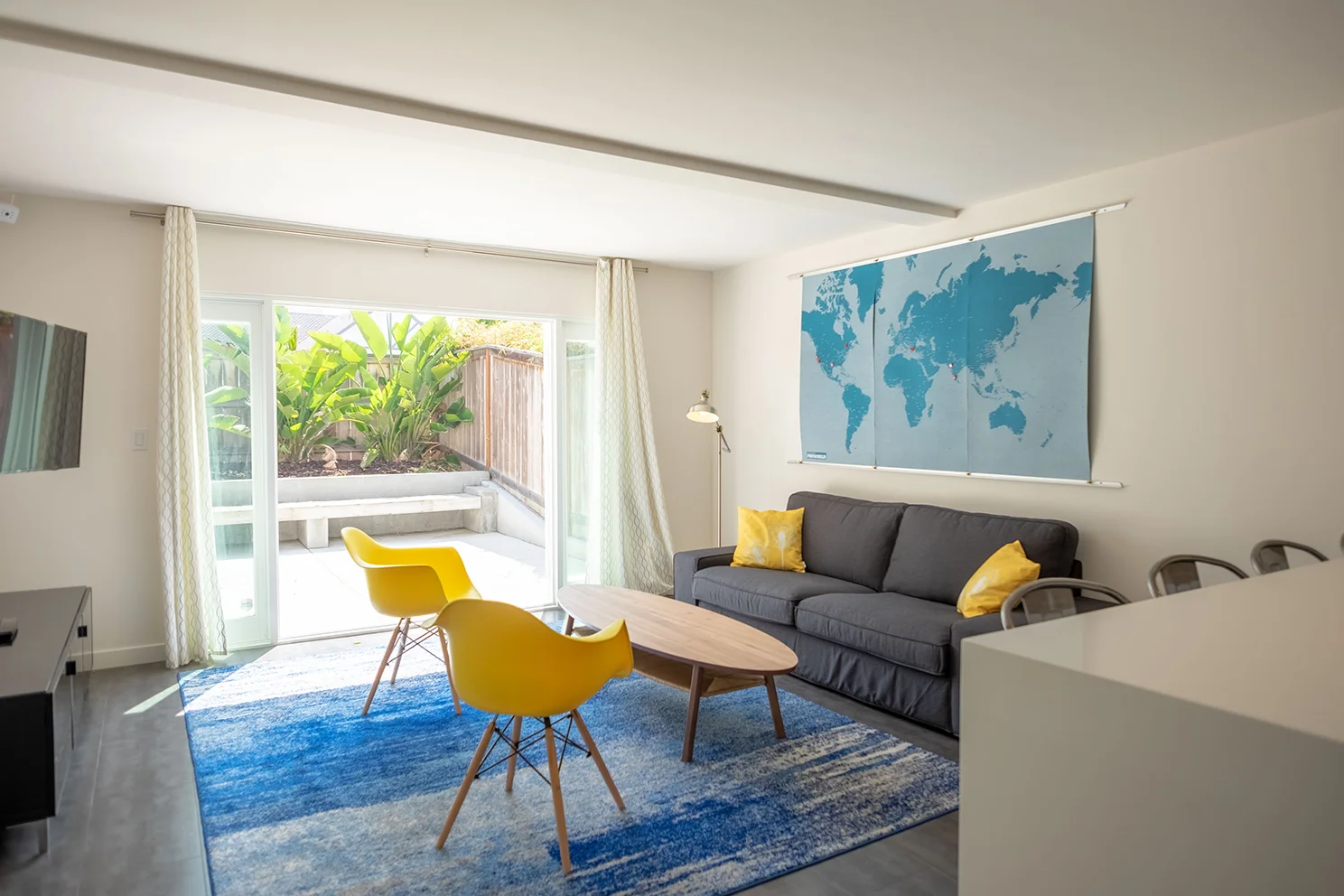
No Undiscovered Deals.
Value Engineering is Hard.
Unknown Unknowns.
You can avoid a potential catastrophe but there's always an element of risk:
- No undiscovered deals. The real market is an accurate indicator of current value in mature high demand markets. Simple uncomplicated properties are few and far between or sell at prices that reflect their potential.
- Value engineering is hard. Even with lots of experience and accurate cost data, renovations introduce a lot of uncertainty. Have enough financial cushion to absorb risk of failure.
- Unknown unknowns. You can't do due diligence for every contingency out there.
In our project everything went smoothly except for one issue. We discovered a leak in a shared roof deck that needed a serious intervention. Coming to an agreement with the owner of the neighbouring unit about the scope of the repair took almost a year of negotiations and lawyers. We completed the roof deck with Dave Jovin of Greyhound General as our general contractor and Lifedeck as the waterproofing contractor. Again with this being a remote job, I was happy to find reliable companies who performed great work and communicated well.

